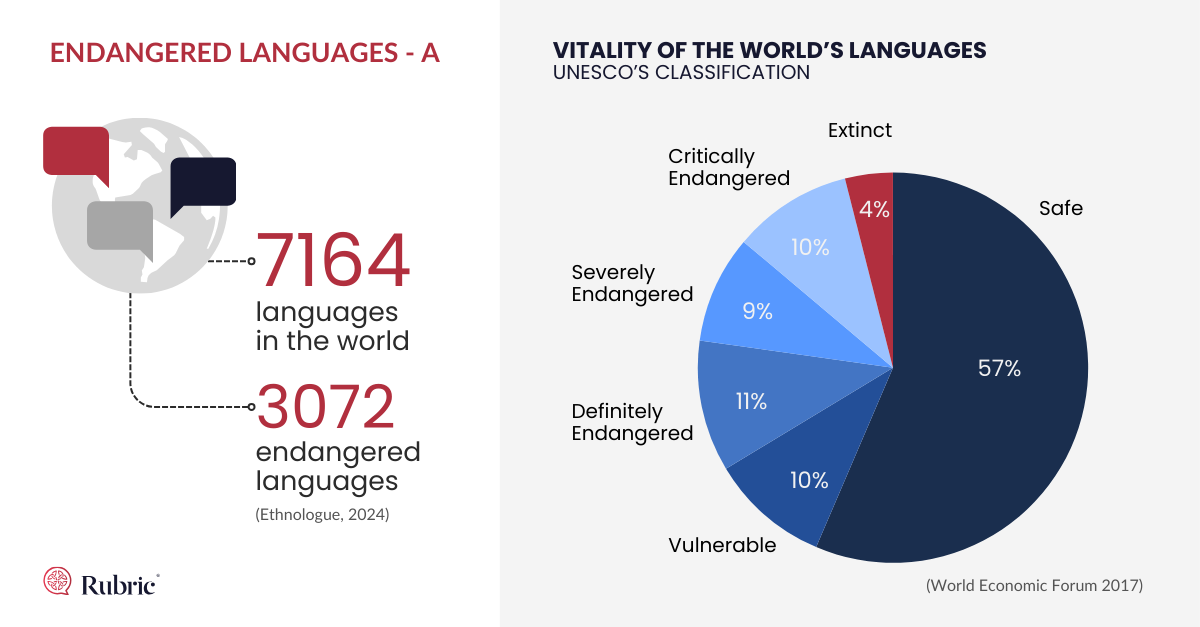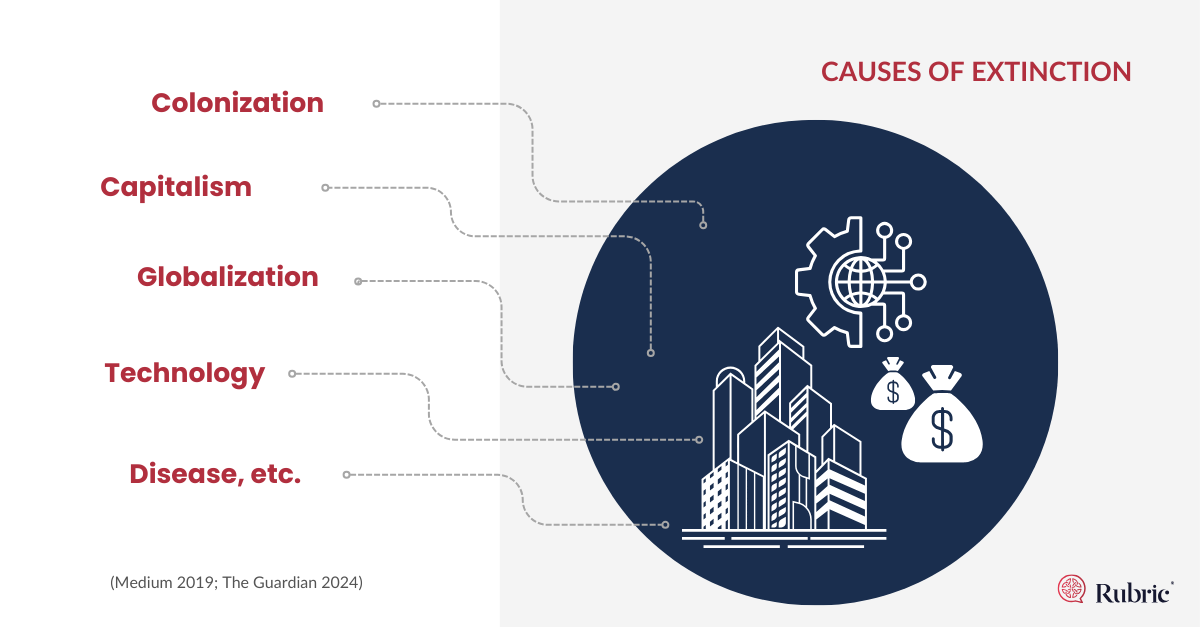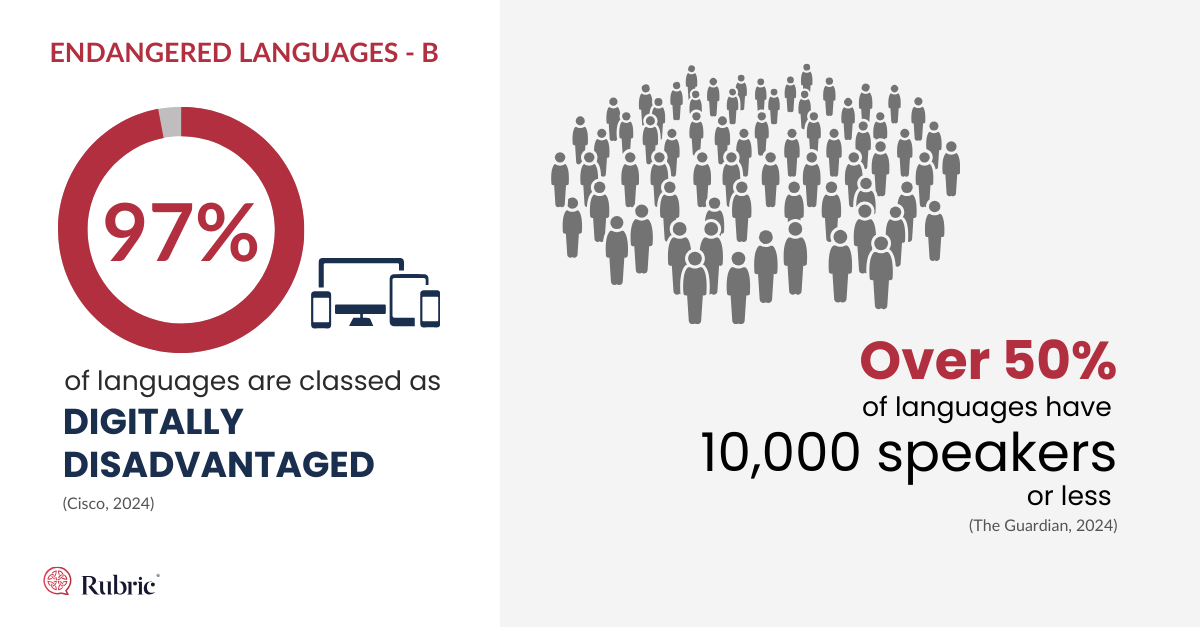
Discussions around endangered languages have never been louder. Nearly 230 languages vanished between 1950 and 2010 and we could see the extinction of over 50% of the world’s languages by the end of the century.
In a serious attempt to preserve indigenous languages, the UN General Assembly has declared 2022-32 the International Decade of Indigenous Languages.
The question is, what is an endangered language? And why bother?
Let’s answer these questions and more.
How many languages are there?
According to Ethnologue, there are 7164 languages in the world. However, the number varies between sources as it depends on the criteria and methodology used to recognize a language.
Any language at risk of extinction in the near future is categorized as endangered. UNESCO classifies languages at risk of extinction into five categories. 57% of the world’s languages are classed as safe from extinction risk. But what about the other 43%?

How often does a language die?
According to UNESCO, a language dies every 14 days. Essentially a language dies when it has no first-language and second-language speakers left.
Maintaining or increasing the number of speakers of a language is vital to saving it from extinction, but over 50% of the world’s languages are spoken by 10,000 speakers or less. Worse still, hundreds of languages have fewer than a dozen speakers.

Why does a language die?
Languages normally die out gradually over generations. Occasionally a language dies very quickly if the number of speakers rapidly declines. This can happen if a natural disaster or disease impacts the population.
A slow death usually occurs as speakers learn a second language and become bilingual. This second language is normally the predominant tongue in their country. Over time subsequent generations lose touch with their mother tongue and a language is lost.
This trend towards adopting another language is often set into motion by several factors. Historically, colonization, imperialism, capitalism, globalization, political repression, disease, and even technology, among other influences, have been responsible for the death of languages. For example, following European settlement in Australia nearly 100 aboriginal languages vanished.

Languages used for global trade have become more and more dominant. This has meant that as technology becomes more pervasive worldwide languages without digital support become severely disadvantaged. This can take many forms – writing scripts may not be supported by word processing tools; software and websites may not be available in that language. For an example of the importance of digital support read about Rubric’s work on the Scots version of the Firefox web browser.
This lack of digitization has a massive impact. Nearly 97% of global languages are classified as digitally disadvantaged, leaving just 3% to dominate the digital landscape.
Because these languages are so dominant more resources are invested in them. In turn more native speakers of other languages learn these languages as doing so provides better access to jobs, education, and other opportunities.
These languages are referred to as “Killer Languages” as their growing dominance increases the likelihood of smaller languages dying out.
The most recent example is the dominance of the English language in all things Artificial Intelligence due to AI being trained using English language data and in English-speaking countries. Could this accelerate the decline of other languages?

Why protect languages?
Languages are not just tools to communicate. Languages are an accumulated body of knowledge that encompass information about the region it has originated.
The language provides insight into the geography, botany, zoology and sociology of a place, the history of its people and their relationship with where they live. Languages provide place-specific frameworks for thinking and problem-solving that have developed over many years.
Losing a language is not just a linguistic or political question. When a language dies we also lose the associated knowledge, wisdom and insight into people and places that the language provided.